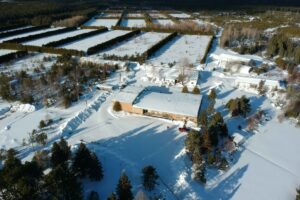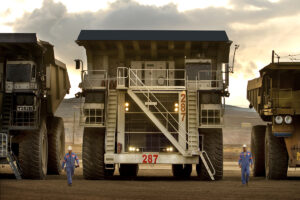Company is confident that high-grade silver can be found in the tailings that were not completely processed more than a century ago
There is a plan to revive a silver mining operation near Gowganda, north of Sudbury.
Nord Precious Metals Mining Inc. announced Aug. 6 that it is seeking permits from the Ontario Ministry of Mines to proceed with the recovery of silver tailings from the historic Castle silver mine.
The plan is to reprocess the old tailings from the site to recover silver that got past the older technology from years gone by.
The new waste material would not be sent to a surface tailings site, but stored underground as backfill in the old mine workings. The company said this will help stabilize the old crown pillar underground.
“This approach not only enhances the structural integrity of the site but also aligns with Nord’s commitment to environmentally responsible mining practices,” said a company news release.
Along with recovered silver from the old tailings, Nord said it also plans to recover broken ore leftover in the old historic stopes which will be sent for processing at the Temiskaming Testing Labs (TTL) in Cobalt.
“This material is expected to contain cobalt and silver grades similar to those found in the waste pile outside the mine. By recovering these valuable resources, Nord is optimizing its resource utilization and contributing to sustainable mining practices,” said the release.
Nord said it has confidence in the value of the old tailings.
“From the historic waste pile, Nord had successfully poured a 1,000-ounce silver bar and produced a high-grade cobalt-nickel gravity concentrate. This concentrate was further processed to produce cobalt sulfate for the Asian market at SGS Lakefield, showcasing Nord’s expertise in generating value-added products from its mining operations,” said the release.
Silver mining in Gowganda, east of the Watershed and approximately 35 kilometres west of Elk Lake, began early in the 1900s after the discovery of silver in Cobalt.
The historic Castle silver mine was periodically active between 1917 and 1989, said the Canadian Mining Journal. It produced 9.5 million ounces of silver and 300,000 lb of cobalt from the No.3 shaft. Additional ore was hoisted through the Castle No.3 and Capitol shafts between 1951 and 1966, but the amount of metal recovered is unknown.
— Sudbury.com
This article was published by: Sudbury.com Staff
Visit the original article here



